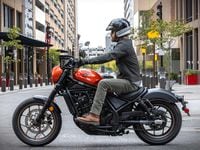A document being called "the most comprehensive in-depth data currently available for Powered Two Wheelers (PTWs) accidents in Europe" has been published by the European motorcycle-industry organization that funded it. Officially titled Motorcycle Accidents In Depth Study (MAIDS), the reposrt is based on investigations of 921 motorcycle accidents (including 103 fatality accidents) from study areas in France, Germany, Italy, the Netherlands, and Spain.
Because the MAIDS team used the Organisation for Economic Co-operation and Development (OECD) methodology for on-scene in-depth motorcycle accident investigations, the report provides the sort of comprehensive results rarely seen in motorcycle safety research, and not available for North American motorcycle accidents since the Hurt Report of the early 1980s. Incorporating the OECD methodology also maintained a consistency between the groups conducting the accident investigations for MAIDS that permits the data to be compared directly with that of other researchers who use the same system, such as a Honda-funded study conducted in Thailand a few years ago.
The MAIDS researchers collected exposure data, that is, information about riders who did not crash in similar locations and situations, which permits researchers to explore how operators of vehicles that crash are different than the control group that does not crash. In the words of the MAIDS authors, "This exposure information on non-accident involved PTW riders was essential for establishing the significance of the data collected from the accident cases and the identification of potential risk factors in PTW accidents. For example, if 20% of non-accident involved PTWs in the sampling area were red, it would be significant if 60% of those PTWs involved in an accident were reported to be red, suggesting that there is an increased risk of riding a red PTW. On the other hand, if none of the PTWs in the accident sample were red, it would be an interesting finding, needing further study."
MAIDS was funded by the Association of European Motorcycle Manufacturers (ACEM) with support from the European Commission and other partners. We wish the American motorcycle industry would follow the lead of its European counterparts.
Although there are significant differences in the roadway structures, cultures, cars, PTWs (there were more scooters in the crashes studied than we'd expect in an American study, for example), and other factors between the European countries where the study was conducted and the United States or other places, there still seem to be many findings in the MAIDS report that are useful and probably relevant to American riders. Some of the revelevant finds we say in the report follow.
Didn't See Him
In half of the collision accidents, the driver of the other vehicle was judged to have made the primary error that caused the crash, and that driver failed to "perceive" the motorcyclist in 70 percent of the two-vehicle collisions. In 37 percent of the the accidents with a "partner," it was the motorcyclist who created the problem. As other research has concluded, drivers with motorcycling experience are more likely to see and avoid motorcyclists. The object motorcyclists most often collided with were passenger cars, so the two-vehicle accident is the major concern for motorcyclists, at least in Europe. The failure of drivers to see motorcyclists reinforces the need for motorcyclists to dress conspicuously, and in this study as in others, riders wearing dark clothing were more likely to crash than others. A recent study in New Zealand found that simply wearing a white helmet significantly reduces the likelihood of a crash.
Solo Crashes Too
Plenty of riders crashed by themselves, though. The second most common point of impact was "the roadway" itself. Yes, some of these non-collision accidents happened as the rider attempted to avoid hitting a car, but plenty of riders managed to crash all by themselves. In rural areas, over half the accidents studied happened without the involvement of another vehicle. This still leaves plenty of opportunity for serious injuries from curbs and roadside "furniture," especially those barriers intended to corral out-of-control cars. The authors note that collisions with such barriers often results in "serious lower extremity and spinal injuries as well as serious head injuries."
Mistakes Riders Make
Rider inattention was cited in 10.6 percent of the crashes. Both riders and drivers "failed to account for visual obstructions" in as many as a third of the accident. A parked truck, roadside bushes or glare can hide something, and motorcyclists need to allow for the possibility that it might be there. They also need to realize that even a small object can block a drivers view of them and adjust their lane position to be seen or accommodate the possibility that the driver might pull in front of them.
Fewer Drinkers, But They Still Crash More
Studies and statistics from other studies around the world has shown that as many as half of the crashers and motorcycle fatalities involved riders who had been drinking, but in the MAIDS research, only 5 percent of the crashers had been drinking. However, drinkers were still determinded to crash 2.7 times more frequently than sober types. Crashing motorcyclists were also more likely to have been drinking than the drivers they collided with.
You Need a License
Getting the proper license to ride what you're astride means that you are less likely to crash. Riders with no licenses or improper licenses crashed more frequently than riders who were properly licensed for what they were riding. This reiterates the conclusions of other studies from other countries, including the U.S.
Training, Experience and Familiarity Work for You
Riders who took some sort of rider training were more likely to try some sort of avoidance maneuver, such as braking or swerving. Untrained riders were more likely to sit there and crash without doing anything to prevent it. Riding experience--both total and on the bike being ridden-- worked in the rider's favor, in terms of fewer crashes. A quarter (24.2%) of the accidents studied involved riders with less than six months experience. Inexperienced riders were also more likely to do something that caused the accident. As other studies have found, you are in more danger on a bike that is new to you (which is bad news for motorcycle testers--or at least an excuse).
Skills Aren't Always Enough, However
The study concludes that "73.1% of all PTW riders attempted some form of collision avoidance immediately prior to impact. Of these, 32% experienced some type of loss of control during the manoeuvre." It also noted that the accident scenarios often presented situations that, once encountered, were beyond the avoidance skills of the vast majority of street riders.
So Dress for the Crash
As with other studies, the MAIDS researchers found that helmets do a good job of protecting their users, providing they fit and fasten them properly. Since this was Europe, 90 percent of the crashers were wearing helmets, and they did a good job--when they stayed on. However, 9 percent of the helmeted riders lost their helmets during the crash, either because they didn't fit properly, weren't fastened properly, or were damaged during the crash. Other protective gear also did a good job of attenuating the most common injuries--to arms and legs--though such gear didn't prevent all injuries.
How Hard Do You Hit?
The authors note that the typical accident speed was modest. In 70 percent of the crashes, the rider hit the car or other object at under 30 mph. Of course, the severity of injuries went up with crash speed. However, speed by itself didn't turn out to be a huge factor in crash causation. The report says: "There were relatively few cases in which excess speed was an issue related to accident causation," but notes that a speed differential--going either faster or slower than nearby traffic--was a contributing factor in 18 percent of the crashes.
Danger Zones
The study found that 90 percent of all threats were in front of the riders who crashed as a result of them. This correlates with other studies, including Hurt.
Over half the accidents happened in intersections. 72% of the accidents took place in urban areas, and a motorcycle was more likely to collide with a passenger car in an urban area (64% of crashes) than in a rural area, where crashes with cars were 47% of the crashes.
Weather was deemed to be a factor in 7.5% of the accidents.
"Roadway design defects" caused or contributed to the crashes 3% of the time.
What Kind of Bikes Crash Most?
The only type of bike that was over-represented in the MAIDS data was "modified conventional street motorcycles." Engine size also didn't show up as a risk factor, which checks with other studies that have used exposure data. There were not enough bikes equipped with anti-lock brakes to draw any conclusion about their effectiveness. Of course, cruisers and choppers are less common in Europe than in America.
How About Old Guys?
Good news for typical cruiser riders: Riders aged 41 to 55 crashed less frequently than the exposure data said they should, but as with previous studies youth and enthusiasm were dangerous. Riders between 18 and 25 years of age crashed more than their fair share. In America, riders over 40 have been showing up as a larger percentage of the crash victims, and since there is no exposure data, there has been concern that they are over-represented. The MAIDS study suggests that issue is not their age, though there may be cultural or other differences that make the situation different. At least age by itself doen't make you unsafe.
But Watch That Passenger
In 9 percent of the accidents where a passenger was being carried, the passenger shifted his or her weight and thereby contributed to the accident.
Check Your Tires and Brakes
Tire failure was the only technical failure that made a real blip in the MAIDS data, at 3.6%. Brake problems were cited in 1.2% of the accidents.
The complete 173-page report can be downloaded as a PDF file from the site of the ACEM, (Association des Constructeurs Europeens de Motocycles, the European motorcycle industry organization). You can also click through the findings page by page from the main page. You must go through a free registration and confirmation process (including giving your email) for access to it.
For more information on safe-riding equipment, strategies, techniques and skills, see the Street Survival section of MotorcycleCruiser.com.











/cloudfront-us-east-1.images.arcpublishing.com/octane/OQVCJOABCFC5NBEF2KIGRCV3XA.jpg)
/cloudfront-us-east-1.images.arcpublishing.com/octane/F3O2DGLA4ZBDJGNVV6T2IUTWK4.jpg)
/cloudfront-us-east-1.images.arcpublishing.com/octane/ZXYQE3MHLFDSPKNGWL7ER5WJ4U.jpg)
/cloudfront-us-east-1.images.arcpublishing.com/octane/RDF24VM7WVCOBPIR3V3R4KS63U.jpg)
/cloudfront-us-east-1.images.arcpublishing.com/octane/W7RSIBFISNHJLIJESSWTEBTZRQ.jpg)
/cloudfront-us-east-1.images.arcpublishing.com/octane/AERA26ENRNBW3K324YWCPEXYKM.jpg)
/cloudfront-us-east-1.images.arcpublishing.com/octane/YWX3YX7QBBHFXFDMEEEKRG4XJE.jpg)
/cloudfront-us-east-1.images.arcpublishing.com/octane/I7OKI53SZNDOBD2QPXV5VW4AR4.jpg)
/cloudfront-us-east-1.images.arcpublishing.com/octane/IH52EK3ZYZEDRD3HI3QAYOQOQY.jpg)
/cloudfront-us-east-1.images.arcpublishing.com/octane/K2FSAN7OWNAXRJBY32DMVINA44.jpg)
/cloudfront-us-east-1.images.arcpublishing.com/octane/G4XK7JL24FCUTKLZWUFVXOSOGE.jpg)
/cloudfront-us-east-1.images.arcpublishing.com/octane/JJNXVAC27ZCDDCMTHTQZTHO55Y.jpg)
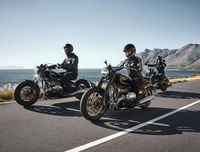

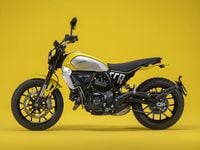
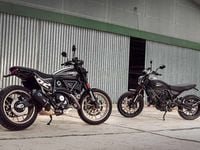
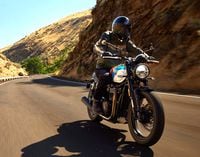
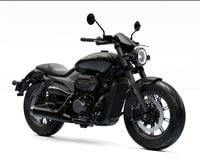

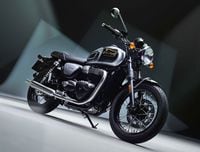

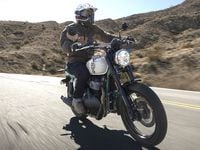
/cloudfront-us-east-1.images.arcpublishing.com/octane/3VSTLPKOHNFTRJTIAAXDPGCPA4.jpg)
